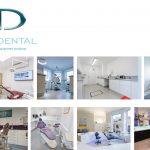 Prevention is built on the basics – brushing, regular appointments, smoking cessation and a low-sugar, balanced diet. The last Adult Dental Health Survey indicated a strong correlation between individuals who brushed their teeth properly, attended the dentist regularly and had less visible plaque.[i] Applying all the ground rules for preventive dental care together, works.
Prevention is built on the basics – brushing, regular appointments, smoking cessation and a low-sugar, balanced diet. The last Adult Dental Health Survey indicated a strong correlation between individuals who brushed their teeth properly, attended the dentist regularly and had less visible plaque.[i] Applying all the ground rules for preventive dental care together, works.
Ongoing motivation
For dentists, dental hygienists and dental therapists, the challenge is to keep patients motivated, so that even those who are orally healthy continue the good work and regularly review their preventive behaviours. Effective prevention means an individual knowing the basics, practicing them, yet being willing to constantly revise and improve. This includes an openness to adding different tools and adjuncts to the daily routine, listening to advice and feeling able to discuss anything that’s started bothering them.
All medical practitioners are doing battle with the Internet when it comes to up-to-date, accurate information. Popular misconceptions about dental health include that white teeth mean healthy teeth and that it’s OK to have a fizzy drink with your lunch every day, as long as the can says sugar-free.
So, don’t underestimate your role as an educator and don’t assume your patients are confident on the basics either – even with regards to something as simple as the correct way to brush. Good brushing technique is the absolute foundation of preventive care, yet there isn’t one single, recommended method. In 2014, researchers found an “unacceptably large diversity” in instructions for both adults and children when they analysed toothbrushing methods recommended by a variety of sources, from dental associations to dental texts[ii].
In early 2019, a randomised controlled trial was published that concluded that the Bass Intrasulcular Toothbrushing Technique (BIT) should be recommended, “particularly to patients exhibiting bleeding on probing and periodontal diseases.”[iii] The BIT method involves angling the brush to allow the bristles to be applied around and under the gumline, in order to remove optimal plaque and bacteria that can accumulate in this space. In the results of the trial, the BIT was shown to be more effective at reducing gingival inflammation, when compared to the patient group who had received no toothbrushing instruction at all.
There are other brushing methods available; a gentle yet careful and thorough clean, lasting for two minutes twice a day, will always be recommended over an overzealous scrub that can damage tooth structure and irritate the gums. Technique should always be revised, recapped and retaught, as dental situations can change and even ‘good’ patients slip into bad habits. Tools really do matter, too and at every appointment, what your patient is using should be discussed. Not every toothbrush is equal and finding one that ticks the boxes of quality, efficacy and functionality is essential. A great brush will be one that a patient can comfortably control and it should be ergonomically designed too. Ask your patients to show you how they hold their brush, so you can check that the brush head reaches all surfaces of the tooth and correct their positioning if necessary.
The new must-haves
Interdental cleaning should now be considered a ‘basic’. Cleaning interdentally will elevate even an already great brushing routine. Another recent study, this time from June 2019, reviewed different interdental cleaning aids and found that “interdental brushes provide a significant benefit over brushing as a monotherapy. The use of floss may not achieve similar results if not effectively performed. Regarding gingival and plaque indices, interdental brushes may be superior to dental floss in at least one parameter, with the added benefits of patient comfort and acceptance.”[iv] The same study found that interdental brushes were particularly effective for improving periodontal outcomes.
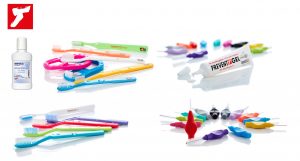
A good quality interdental brush will be robust enough to hold firmly, even with wet hands, and feel pleasant as it travels through tricky spaces to effectively remove stubborn deposits. The TANDEX FLEXI™ is a great choice for patients new to interdental brushing; they will find it easy to manipulate for a really deep clean and will soon feel the benefits of their elevated daily routine.
Dentists, dental hygienists and dental therapists should go over the basics of prevention at every appointment – checking what their patients are doing and telling them how to adapt (if necessary) and improve. Returning constantly to the foundations, ensuring that these are solid, then discussing how to build on them is an easy way to offer added value to every preventive-maintenance appointment. It’s a practitioner’s job to teach, advise and motivate – showing patients how they can do things even better. If a patient feels that they are learning something new every time and that you are invested in their dental health and fully focussed on their unique oral situation, rather than just giving generic advice, this can be the start of a great relationship.
For more information on Tandex’s range of products,
visit www.tandex.dk or visit the Facebook page
References
[i] Adult Dental Health Survey – England, Wales, Northern Ireland 2009. Theme 5: Preventive Behaviour and Risks to Oral Health. The Health and Social Care Information Centre, 2011. Link: https://files.digital.nhs.uk/publicationimport/pub01xxx/pub01086/adul-dent-heal-surv-summ-them-the5-2009-rep7.pdf (accessed August 2019).
[ii] Wainwright J, Sheiham A. An analysis of methods of toothbrushing recommended by dental associations, toothpaste and toothbrush companies and in dental texts. British Dental Journal. 2014 Aug; 217 (3): E5.
[iii] Ausenda F, Jeong N, Arsenault P, Gyurko R, Finkelman M, Dragan IF, Levi Jr PA. The Effect of the Bass Intrasulcular Toothbrushing Technique on the Reduction of Gingival Inflammation: A Randomized Clinical Trial. Journal of Evidence Based Dental Practice. 2019 Jan 28.
[iv] Ng E, Lim LP. An Overview of Different Interdental Cleaning Aids and Their Effectiveness. Dentistry Journal. 2019 Jun; 7(2): 56.




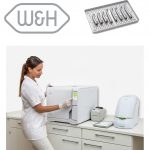
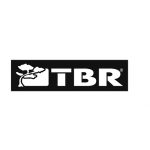
 The restoration of anterior teeth with implant-supported restorations is arguably one of the most difficult procedures to execute. This not only relates to the clinical aspect of treatment, but also to patient demands and expectations regarding implant placement in an area of particular aesthetic significance. The ultimate aim is to provide a long-lasting restoration that enhances the aesthetic of a patient’s smile and complements the overall appearance of their face. There are various factors that clinicians should consider in order to ensure a highly satisfactory outcome.
The restoration of anterior teeth with implant-supported restorations is arguably one of the most difficult procedures to execute. This not only relates to the clinical aspect of treatment, but also to patient demands and expectations regarding implant placement in an area of particular aesthetic significance. The ultimate aim is to provide a long-lasting restoration that enhances the aesthetic of a patient’s smile and complements the overall appearance of their face. There are various factors that clinicians should consider in order to ensure a highly satisfactory outcome.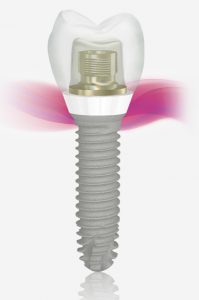

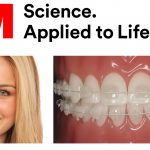

 So often in dentistry we think that providing care for our patients is enough. However, one of the best parts of working in a supportive, caring profession is being able to help your local area beyond the call of the profession.
So often in dentistry we think that providing care for our patients is enough. However, one of the best parts of working in a supportive, caring profession is being able to help your local area beyond the call of the profession.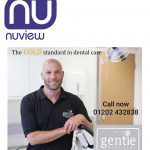

 Prevention is built on the basics – brushing, regular appointments, smoking cessation and a low-sugar, balanced diet. The last Adult Dental Health Survey indicated a strong correlation between individuals who brushed their teeth properly, attended the dentist regularly and had less visible plaque.
Prevention is built on the basics – brushing, regular appointments, smoking cessation and a low-sugar, balanced diet. The last Adult Dental Health Survey indicated a strong correlation between individuals who brushed their teeth properly, attended the dentist regularly and had less visible plaque.

